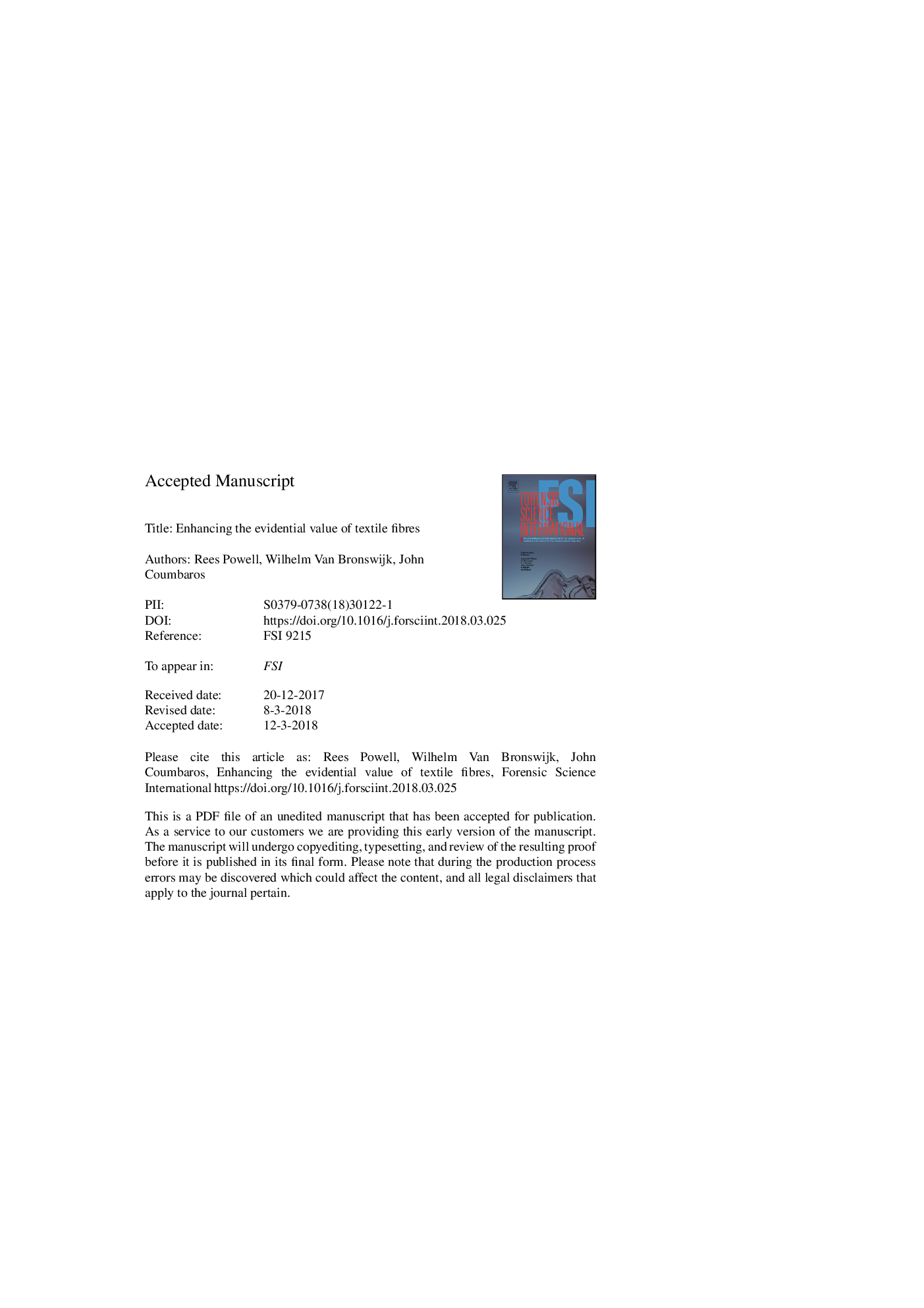| Article ID | Journal | Published Year | Pages | File Type |
|---|---|---|---|---|
| 6551028 | Forensic Science International | 2018 | 21 Pages |
Abstract
In numerous major crime cases undertaken at our laboratory the recovery of large numbers of fibres (>1000), particularly in cases with no known source, presented several challenges. These included the inability to effectively manage the data (i.e. combination of MSP spectra, microscopic characteristics, composition, etc.) and perform comparisons in an efficient manner. To address these challenges, and in response to a growing need for performing fibre comparisons, we developed a database of textile fibre microspectrophotometric (MSP) spectra. The database, designed to compare MSP spectra using a modified Pearson method of correlation, currently contains over 20,000 normalised and first derivative spectra of casework, validation and reference textile fibres. A comparison strategy for cases with a large number of questioned samples was devised, involving identification of critical fibres in the casework data set, development of preliminary fibre groups classified according to their corresponding/similar MSP spectra, and verification of the preliminary groups via brightfield and fluorescence comparison microscopy. The database has successfully been utilised for proficiency trials and casework with small questioned fibre sets. Furthermore, in a case involving a larger dataset (>4000 “unknown” fibres) the database assisted in the efficient classification of 156 distinct groups of interest, highlighting its utility in providing investigative leads for the identification of potential sources of the recovered fibres.
Related Topics
Physical Sciences and Engineering
Chemistry
Analytical Chemistry
Authors
Rees Powell, Wilhelm van Bronswijk, John Coumbaros,
